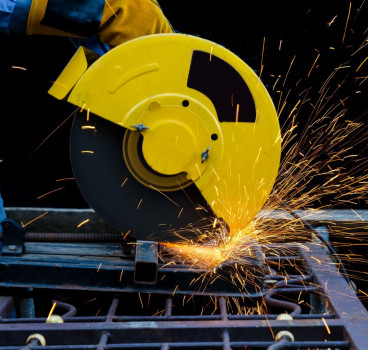Sacrificial anodes and how they reduce corrosion in concrete
For eighteen years, Sika® Galvashield® Anodes have been successfully employed to prevent corrosion in reinforced concrete. The method behind the solution, however, was devised a long time before then - 194 years to be precise.
In 1824, Sir Humphrey Davy deduced the simple principle of a sacrificial anode for the Royal Navy, which has led to the development of management systems as a time and cost-effective solution for concrete structures at high risk of corrosion.
HISTORY
Galvanic anodes for reinforced concrete structures were developed in the late 1990s and are produced from zinc encased in a formulated porous cementitious mortar surrounded by a specifically developed activator with a pH>14.5. Their manufacture has proved a major success in the treatment of chloride-induced corrosion of steel reinforcement in concrete structures. Chlorides can be introduced into the concrete in multiple ways: cast in during construction; use of sea dredged aggregates, chemical works and deicing salts or seawater leading to the localized breakdown of the normally passive steel reinforcement in the form of pitting corrosion.
In structural trials at sites across the UK, zinc galvanic anodes were shown to be successful in providing adequate cathodic current to the steel reinforcement around the periphery of a patch repair for a period of 18.5 years and continue to work. The process involves the activation of the anode's sacrificial zinc core by the surrounding specially-formulated cementitious mortar. The anode is quickly and easily fastened to the exposed reinforcing steel, and once installed, corrodes preferentially to the surrounding rebar. The system, which contains integral lead wires, can be targeted at specific high-corrosion risk areas within structures or over large areas for widespread corrosion protection and control.
Patch repair alone is a less reliable solution than total corrosion management, as its long-term effectiveness is hampered by the prevalence of chlorides in other areas of the concrete. Whilst removing and making good the most visibly spalled section of the structure might initially appear to resolve the issue, the repair of sites which are actively corroding in a chloride-contaminated structure is likely to stimulate corrosion at sites adjacent to the repair – a phenomenon known as the incipient anode, ring anode or halo effect.
REPAIR AND RESIST
Therefore, a long-term management solution that includes Sika® Galvashield® XP - which comprises embedded galvanic anodes - addresses the source of the corrosion and is a far more cost-effective repair solution as it minimizes ongoing maintenance costs and extends the life of the structure. Galvanic anodes can eliminate the need for long-term power supplies and control equipment to ensure low-running costs and an attractive option for remote structures. They can also negate the need to break-out large areas of contaminated concrete, reducing environmental disruption and the need for structural propping.
A zinc core encased by a small, cementitious shell, Sika® Galvashield® sacrificial anodes might not demonstrate a particularly dynamic presence, but they've proved a mighty effective weapon against the corrosive elements which threaten the structural integrity of concrete structures the world over.
Additional Blogs

How Does OSHA and HSE Enforce Their Standards?
The Occupational Safety and Health Administration (OSHA) and its U.K. counterpart, the Health and Safety Executive (HSE), are the primary bodies governing workplace safety. Their role is to reduce...
Read moreIs modular construction suffering from an identity problem?
Modular construction has been hailed as the future of the building industry for more than a decade. Promises of speed, efficiency, reduced waste and improved quality have made it a go-to headline...
Read more

The small innovations helping to transform construction
Construction’s biggest stories tend to revolve around landmark buildings, major digital breakthroughs, or the occasional crisis that pushes the industry into the headlines. Yet much of the sector’s...
Read more